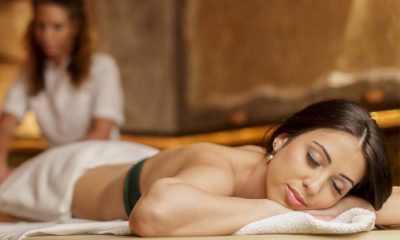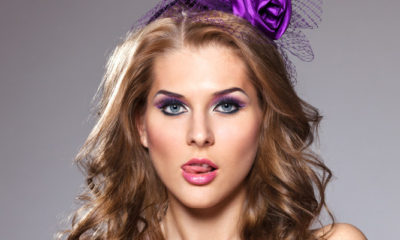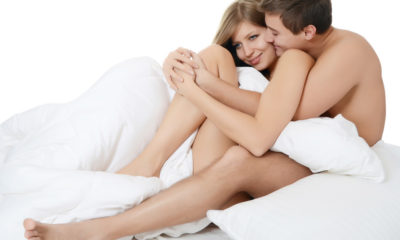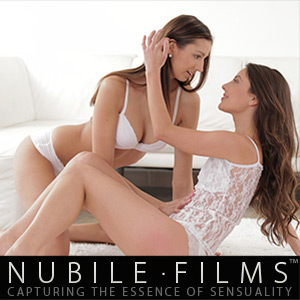Sex Ed
Newbie Guide To Tantric Massage
How many types of massage can you think of? Everyone will think of the Swedish massage, the deep tissue, sports. Thai or hot stone. If you’re slightly savvier, you might have heard of shiatsu or reflexology. Acupuncture, acupressure and aromatherapy also fall under the ‘massage and bodywork’ category. According to Associated Bodywork & Massage Professionals, there are around 250 types of massage and bodywork, and this list is continually growing.
To make matters even more confusing, some of the massages don’t prioritise touch in the same way as traditional massage styles. Massage modalities draw inspiration from each other, but each one also has their own signature strokes, techniques, approaches and a variety of pressures. And that’s not the only thing – every massage school and teacher have their own style of massaging, whether they realise it or not, and this creates even more ‘flavour’ within the therapy. Trainee therapists then build on this by adding their own flavours based on their knowledge, limitations, individual approach and personal experiences. This makes massage even more versatile and can lead to its further evolution.
A brief background on massage therapy
Massage is said to be one of the oldest therapies. Dating back as back as 3,000BC, it was always used as a way of healing and promoting good health. Ayurveda is one of the first massages created and has paved the way for the rest.
Eastern massage vs Western massage
On the whole, massage is a gentle therapy that promotes relaxation and revitalisation as it refreshes the body – physically and mentally. But just as massage varies from therapist to therapist, it also varies from culture to culture. There are two main cultures spearheading massage therapy – the East and the West. Eastern and Western massages follow different approaches, although they arguably share the same goals. Eastern massages follow the energy approach – the body is made up of a number of vital energies which must be balanced and free-flowing if good health is to be maintained. Asian massage styles typically use techniques that are focused on improving energetic flow and promoting positive energies. In contrast, Western massages are based on anatomy and physiology. They directly address various parts of the body and work to restore and realign whole systems such as the digestive and musculo-skeletal systems.
Swedish massage: the best known massage in the West
One of the most popular and well-known massage styles in the West is the Swedish massage. Developed by Johan Georg Mezger in the 19th century, Swedish massage is a relaxing therapy that involves gentle pressures and five basic strokes (effleurage, petrissage, tapotement, frictions and vibrations) that have influenced many other styles of Western massages.
Swedish massage involves the masseuse lying face down on a table, naked or only wearing their underwear while the therapist applies various pressures and strokes to the target areas. A draping technique is used where the therapist covers the client’s naked body with a sheet and only uncovers the parts they’re working on, so modesty is always preserved. Sports and deep tissue massage drew inspiration from the Swedish massage, incorporating the basic strokes but using deeper, more intense pressures.
Acupressure, shiatsu and Thai massage: their significance in Eastern medicine
In contrast to the anatomical and physiologically-focused motions of Swedish massage, acupressure is based on energetic flow and using finger pressure to stimulate various key areas of the body that are believed to be linked to other parts. By applying various pressures and massage techniques in certain areas, pain or malfunction in other body parts or systems can be relieved. Similarly, the Japanese massage shiatsu follows an energetically-focused, hands-on approach. Shiatsu is well-known for its finger pressure technique which involves the therapist applying varying pressures using their fingers to specific zones on the body that are located along mystical energy lines. Theoretically, the motions are supposed to restore balance within the body but physically, it’s also extremely relaxing and stimulates blood and lymphatic flow.
Thai massage is possibly one of the more active modalities as it is a mix of massage and yoga. Also known as the lazy person’s yoga due to the therapist helping the client get into a series of stretches, Thai massage involves meditation, stretching, tugging, compression and an emphasis of breathing techniques. Again, the movements are meant to boost and regulate the flow of energy within the body. But Thai massage helps to relieve tightness in muscles and joints, and improve flexibility among other benefits.
Now you have probably heard of acupressure, shiatsu and Thai massage, even if you’re not a regular massage goer. One of the lesser known Asian massage styles is tantric massage. Rooted in tantra, which is an ancient practice that combines mantra, asana, mudra, bandha and chakra, tantric massage can be extremely helpful in helping you release negative thoughts, de-stress and promote a positive outlook on life.
Tantra can exist in many formats, the most popular being yoga, massage and sex. When you Google ‘tantra’, you may be greeted with lists of blogs entitled ‘enjoy tantric sex with your partner’ and claiming to be filled with tips on how tantra can revive your relationship and give you mind-blowing pleasure. This may be part of the reason why tantra and tantric massage is lesser known in comparison to other Asian massages. Its connection to sex has overshadowed its benefits. But before we get into that, what even is tantra? And what is tantric massage?
Unravelling tantra & tantric massage
Tantra is an ancient theory that draws inspiration from Hindu and Buddhist teachings. It’s thought to have been developed during the first millennium CE. In Hinduism, tantra is often linked to Shaktism, Shavism and Vaishnavism. In Buddhism, the Vajravana tradition is most known for its descriptive tantric ideologies and practices. Tantric Hindu and Buddhist theories have played a role in influencing other religious traditions, such as Sikhism, Daoism and the Japanese Shinto. Tantra is concerned with helping people reach higher levels of awareness, using mantras, meditation, yoga and rituals. It’s about harnessing the power of the mind to exercise self-control over the body and soul. In some ways, it’s easy to see where tantric sex has drawn its inspirations from.
Shri Aghorinath Ji is a tantric master who has penned his view on tantra. Published on ThoughtCo, he called tantra “one of the most neglected branches of Indian spiritual studies” even though there is an abundance of texts dedicated to the practice, dating back as far as the 5th century. He explained that tantra is a combination of ‘tattva’ and ‘mantra’. Tattva is the science of cosmic principles and mantra is a phrase or belief that’s repeated to aid concentration. Tantra is then a practice that involves focusing the mind on a singular goal and harnessing that to promote energetic balance within the body.
So how can tantra be applied to real life? Well traditionally, the general view has always been that materialistic desires and spiritual aspirations are mutually exclusive – you can’t be a completely altruistic and ‘good’ person if your mind is clouded by materialistic wants. This sets up the stage for an endless internal battle. Most of us try to be good people but we also have an instinctive urge to chase after what benefits us the most. Because there’s no way to unite these two impulses, we become plagued with guilt, self-condemnation or sometimes, become hypocritical.
Shri Aghorinath Ji stated that tantra is an alternative path. He said: “Tantra itself means to weave, to expand, and to spread”. Life can provide everlasting satisfaction but only when every part is working in harmony with each other. We are born with all of this set up, but as we grow, desire, fear and ignorance provide conflicting viewpoints, which make it harder for harmony to be achieved. Tantra is a practice that can help these parts of life naturally and peacefully come together. Tantric massage is an evolution of tantra, providing a more hands-on approach to achieving harmony.
What makes a massage tantric?
Tantra is about providing harmony and a tantric massage helps with this by increasing self-awareness and awakening the essence of a person’s soul. Tantric practitioners believe that there is much untapped potential within all of us. One of the best ways to release and harness this is to use sexual energy. Massage therapy is already concerned with touch, but tantric massage takes it to a different level. Tantric massage is no ordinary massage. It combines classic massage techniques with meditation and soothing, sensual touch which promotes relaxation, boosts concentration and helps with intimacy issues.
A tantric massage focuses on energy flow, just like any other Eastern massage, but there is also an emphasis on emotions and the formation of deep connections between the masseuse and the client. Typically, a tantric massage is performed naked and involves stimulation of all of the client’s erogenous zones. It’s important to remember that although an erotic massage is somewhat erotic in nature, it isn’t entirely sexual. Pleasure is an integral part of a tantric massage, but sexual intercourse isn’t. There is, however, a lot of sensuality involved so a tantric session is undoubtedly an adult massage.
Nudity is essential because it allows for sexual energies to flow freely, sensuality to be passed along and represents an opening of the soul. Every single part of the body is touched, including the sexual areas because these are the most energy-potent parts. In the beginning, the therapist will deeply massage the body from head to toe, paying every part a lot of attention apart from the sexual areas. These parts are initially avoided so the receiver can relax and slowly become accustomed to the intense level of sensual touch of the massage. If a person is nervous, they will subconsciously tense up their muscles which make it harder for the therapist to properly access the deeper tissues.
Once the client is sufficiently relaxed and it is appropriate to move on, the therapist will start paying attention to the genitals. The touch will be gentle, sensual and loving. It’s normal if the client experiences arousal and even orgasm. A tantric massage is meant to be pleasurable. But it’s important to remember that while it’s welcomed, orgasm isn’t a goal for a tantric masseuse. This is what sets a tantric massage apart from a typical erotic Asian massage.
The benefits of a tantric massage
Because of the sensual nature of tantric massage, it feels very pleasurable. Pleasure is the natural cure to stress. When you experience pleasure, dopamine is released into your bloodstream and sent to your brain. Dopamine is a hormone that lights up the pleasure centre in the brain and motivates us to continue seeking activities that produce even more dopamine. Whether it’s a pay rise, a sugar fix or a tantric massage, the anticipation of pleasure is what triggers that feel-good sensation inside us and gives us the motivation to chase after it.
Although orgasm isn’t a goal of tantric massage, it is the natural side effect of pleasure and is welcomed by practitioners. A 2000 study, which involved 2,632 women, found that 39 per cent of them masturbated in order to relax. This is because of the hormone oxytocin which is released in the run-up to and during an orgasm. A further study found that during an orgasm, the part of the brain which is associated with fear and anxiety experiences little to no activity. This shows how stress-relieving pleasure is.
Pleasure is also known to facilitate sleep, reduce insomnia and relieve pain. Why? Oxytocin and serotonin are known to be relaxing, stress relieving and stabilise mood, which sets up the ideal condition for sleep. As for pain, endorphins are the body’s natural painkillers.
How a tantric massage works
A tantric massage is built around our natural craving for touch. A 2009 study found that people have an innate ability to communicate using touch alone. Although we are “a touch-phobic society”, as described by the study’s researchers, we are all equipped with the sophisticated ability to send and receive emotional signals via touch. Further studies have found that touch enhances messages sent via speech and body language.
Laura Guerrero, who co-wrote Close Encounters: Communication in Relationships, told Psychology Today: “We feel more connected to someone if they touch us.”
This is certainly the case for tantric massage as the sensual, loving touches actually help to build relationships and trust. The importance of tantric massage in maintaining a healthy, stress-free life can be compared to the importance of sex in a relationship. Gigi Engle wrote on Elite Daily that for her, sex allows her to be as close to her partner as she possibly can. She wrote: “Sex is where I find closeness with my partner that cannot be achieved simply by romantic touching.” Tantric massage facilitates that. Trust is something to be earned and not so easily either. The nature of a tantric massage means the receiver has to be relaxed and trusting enough to progress to onto the sensual stages.
Many people associate tantric massage with sex and this is a misconception. Tantra is merely a practice that helps cultivate concentration. Tantric massage does involve sexual stimulation, arousal and pleasure, but as countless studies have proved, pleasure isn’t necessarily a bad thing. Don’t be ashamed to try a tantric massage – it can do you a world of good.
Martina – A writer, writer contributor, journalist, massage therapist, tantra specialist and researcher for Oriental Massages in London ( http://www.oriental-massages
Featured image courtesy of Shutterstock
Like to be featured on SimplySxy? Drop us an email at editorial@SimplySxy.com!
A writer, writer contributor, journalist, massage therapist, tantra specialist and researcher for Oriental Massages in London ( http://www.oriental-massages.co.uk/ ).

































